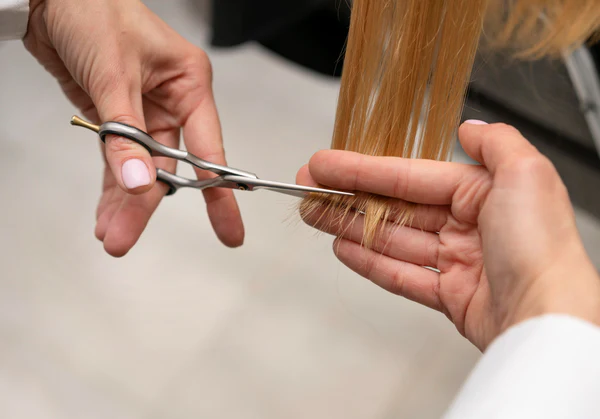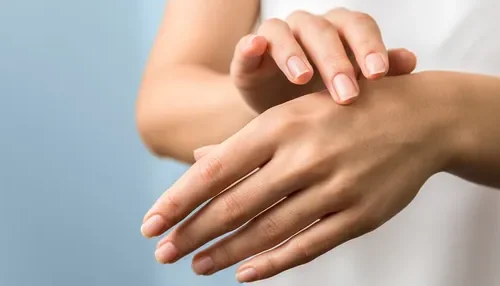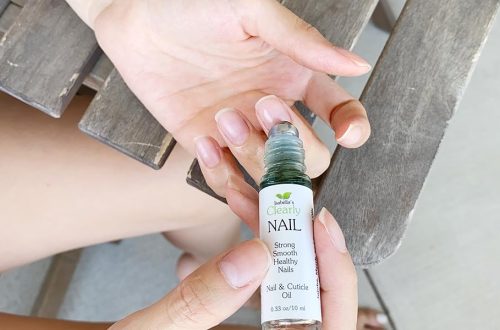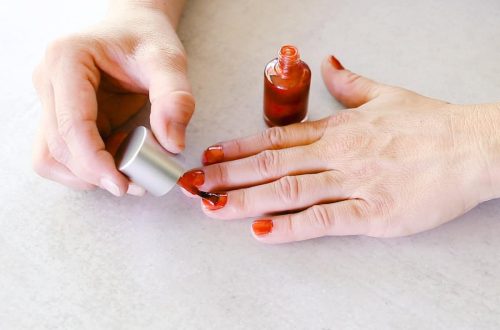Split ends, those pesky frayed strands that seem to multiply faster than we can trim them, are one of the most common hair concerns affecting people of all ages and hair types. While the only true cure for split ends is removal through trimming, numerous natural approaches can prevent their formation and temporarily mend minor damage. Understanding the causes of split ends and implementing protective hair care routines can significantly reduce their occurrence, helping you maintain healthier, more manageable hair for longer periods between trims.
The journey toward healthier hair requires recognizing that split ends are often a symptom of broader hair health issues rather than an isolated problem. By addressing the underlying causes through gentle handling, proper nutrition, and natural treatments, you can create the conditions for stronger, more resilient hair that resists damage and maintains its integrity. This holistic approach to hair care emphasizes prevention over correction, helping you work with your hair’s natural structure rather than against it.
Understanding Split Ends
Knowing what causes split ends helps inform the most effective prevention strategies:
What Are Split Ends?
- Structural Damage: Split ends occur when the protective outer layer of the hair shaft (cuticle) becomes damaged, allowing the inner layers to separate
- Progressive Damage: What starts as a small split can travel up the hair shaft if left untreated
- Irreversible Condition: Once a hair strand has split, it cannot be permanently repaired – only trimmed or temporarily sealed
- Appearance Variations: Splits can be single, double, or multiple branches, and may appear as white dots or frayed tips
Common Causes
- Mechanical Stress: Brushing wet hair, aggressive styling, and tight hairstyles cause physical damage
- Heat Damage: Blow dryers, flat irons, and curling irons can weaken hair structure
- Chemical Treatments: Coloring, perming, and relaxing processes compromise hair integrity
- Environmental Factors: Sun exposure, wind, and pollution contribute to hair damage
- Nutritional Deficiencies: Lack of essential nutrients weakens hair from within
Preventative Hair Mask Recipe
A nourishing treatment that strengthens hair and prevents future damage:
Deep Conditioning Hair Mask
- 1 ripe avocado, mashed
- 2 tablespoons honey
- 1 tablespoon coconut oil (melted)
- 1 egg (optional, for extra protein)
- 5 drops lavender essential oil (optional)
- Mix Ingredients: In a medium bowl, mash the avocado until smooth, then whisk in honey and melted coconut oil.
- Add Optional Ingredients: If using egg, beat it lightly and mix in thoroughly. Add essential oil if desired.
- Prepare Hair: Start with clean, damp hair. Detangle gently with a wide-tooth comb.
- Apply Mask: Section hair and apply the mask from mid-length to ends, avoiding the scalp.
- Massage Gently: Work the mask into the hair shaft using gentle downward motions.
- Cover and Wait: Cover hair with a shower cap or warm towel and leave for 20-30 minutes.
- Rinse Thoroughly: Rinse with cool water until water runs clear, then shampoo lightly if needed.
- Frequency: Use 1-2 times weekly for best results, reducing frequency as hair improves.
How to Apply Hair Masks
Proper application techniques maximize the benefits of your treatments:
- Hair Preparation: Start with clean, damp hair that’s free of product buildup for optimal absorption.
- Sectioning: Divide hair into 4-6 sections to ensure even application and coverage.
- Focus on Ends: Apply mask primarily to mid-length and ends where damage is most common.
- Avoid Scalp: Keep treatments off the scalp to prevent greasiness and clogged follicles.
- Gentle Distribution: Use a wide-tooth comb to distribute the mask evenly through sections.
- Heat Enhancement: Wrap hair in a warm towel to open cuticles and improve penetration.
- Timing: Leave masks on for recommended time without exceeding to avoid over-processing.
Application Tips
- Use an old t-shirt or towel to protect clothing during mask application
- Apply extra product to areas that feel dry or look damaged
- Don’t rinse with hot water, which can strip away the benefits
- Follow with a light conditioner if hair feels rough after rinsing
Prevention Best Practices
Daily habits that protect hair from future damage:
Gentle Handling Techniques
- Wet Hair Care: Use a wide-tooth comb or detangling brush on wet hair, starting from ends and working upward
- Towel Drying: Pat or squeeze excess water rather than rubbing with towels
- Heat Protection: Always use heat protectant when styling with heated tools
- Brushing Frequency: Limit brushing to styling needs and use gentle, deliberate strokes
Styling Considerations
- Air Drying: Allow hair to dry naturally whenever possible to reduce heat exposure
- Loose Styles: Wear ponytails and braids loosely to prevent tension damage
- Overnight Protection: Sleep on silk or satin pillowcases to reduce friction
- Regular Trims: Schedule trims every 6-8 weeks to remove damage before it travels up the shaft
Additional Natural Treatments
Supplementary methods that can enhance hair health:
Overnight Oil Treatment
- 2 tablespoons argan oil or jojoba oil
- 1 tablespoon castor oil
- 3 drops rosemary essential oil (optional)
Mix oils and apply to dry hair before bed, focusing on ends. Cover with a shower cap and rinse in the morning. Use 1-2 times weekly.
Rinse-Off Protein Treatment
- 1/2 cup plain yogurt
- 1 tablespoon honey
- 1 egg white
Apply to clean, damp hair for 15 minutes before rinsing thoroughly. Use every 2 weeks to strengthen hair without over-processing.
Nutritional Support
Dietary factors that influence hair health and strength:
Essential Nutrients
- Protein: Hair is made of protein (keratin); include lean meats, fish, eggs, and legumes
- Biotin: Supports keratin production; found in nuts, eggs, and leafy greens
- Omega-3 Fatty Acids: Nourish scalp and add shine; sources include fatty fish and walnuts
- Vitamin C: Aids iron absorption and collagen production; citrus fruits and berries are excellent sources
- Zinc: Supports hair tissue growth and repair; found in oysters, beef, and pumpkin seeds
- Iron: Deficiency linked to hair loss; include red meat, spinach, and lentils
Hydration and Supplements
- Drink adequate water to support overall hair hydration and flexibility
- Consider a high-quality multivitamin if dietary intake is insufficient
- Limit processed foods that may interfere with nutrient absorption
- Include sulfur-rich foods like garlic and onions for keratin production
Environmental Protection
Shielding hair from external damage factors:
Seasonal Considerations
- Summer Protection: Wear hats or use UV-protectant hair products when exposed to sun
- Winter Care: Protect from cold, dry air with scarves and intensive moisturizing
- Humid Conditions: Use anti-humidity products to prevent frizz and swelling
- Pollution Defense: Rinse hair after exposure to urban environments or smoke
Daily Protection
- Chlorine Exposure: Wet hair with clean water before swimming to reduce chlorine absorption
- Heat Styling: Use the lowest effective heat setting and limit frequency
- Mechanical Stress: Avoid elastic bands with metal clasps that can snag hair
- Chemical Treatments: Space out coloring and chemical services to allow recovery time
Monitoring Progress
Tracking improvements helps maintain motivation and adjust approaches:
What to Look For
- Split End Reduction: Note fewer visible splits and less fraying at ends
- Texture Improvements: Observe increased smoothness and reduced roughness
- Manageability: Notice easier styling and less tangling during daily care
- Overall Health: Look for increased shine and reduced breakage during handling
Timeline Expectations
- Week 1-2: Initial improvements in moisture and softness
- Month 1-2: Noticeable reduction in frizz and tangling
- Month 3-4: Visible decrease in split ends and improved strength
- Ongoing: Continued refinement with consistent care
Troubleshooting Common Issues
Addressing specific hair problems with targeted natural solutions:
Persistent Split Ends
- Trimming Schedule: Increase frequency of professional trims to remove damage
- Heat Reduction: Eliminate or drastically reduce heat styling tools
- Styling Habits: Reassess brushing techniques and hair tie materials
Over-Conditioned Hair
- Protein Balance: Add protein treatments to strengthen over-moisturized hair
- Application Adjustments: Focus treatments on ends and avoid scalp contact
- Rinse Thoroughly: Ensure all products are completely removed to prevent buildup
Professional Guidance
When to seek expert help for hair concerns:
Warning Signs
- Excessive Breakage: Hair breaking faster than it grows despite proper care
- Sudden Changes: Rapid texture changes or increased shedding not related to seasonal patterns
- Scalp Issues: Persistent itching, flaking, or irritation accompanying hair problems
- Complete Lack of Improvement: No progress after 2-3 months of consistent natural treatments
Environmental and Economic Benefits
Natural hair care offers advantages beyond personal health:
Eco-Friendly Aspects
- Reduced Chemical Exposure: Minimize environmental contamination from salon chemicals
- Sustainable Ingredients: Many natural treatments use renewable plant-based components
- Less Packaging Waste: Homemade treatments reduce single-use product packaging
- Local Sourcing: Ingredients often available from local grocery stores or farmers markets
Cost Effectiveness
- Ingredient Longevity: Small amounts of quality ingredients last for months of treatment
- Multi-Purpose Use: Many ingredients benefit skin and overall health as well
- Reduced Professional Services: Healthier hair may reduce need for frequent salon visits
- Preventive Care: Addressing issues early prevents costly repairs or treatments
Special Considerations
Adapting hair care for specific needs and circumstances:
Hair Type Variations
- Curly Hair: Focus on moisture retention and gentle detangling techniques
- Fine Hair: Use lighter oils and avoid heavy treatments that can weigh hair down
- Coarse Hair: Benefit from more intensive protein treatments and heavier oils
- Color-Treated Hair: Choose sulfate-free ingredients and reduce heat exposure
Lifestyle Factors
- Active Lifestyle: Rinse hair after sweating and use clarifying treatments weekly
- Professional Styling: Coordinate natural treatments with salon services
- Travel Considerations: Pack multi-purpose ingredients and adapt to local water conditions
Educational and Social Benefits
Beyond personal care, natural hair health offers broader advantages:
Learning Opportunities
- Nutritional Awareness: Develop understanding of how diet affects physical appearance
- Hair Science: Learn about hair structure and the effects of different treatments
- Holistic Health: Connect external care to internal wellness practices
Community Engagement
- Family Care: Share natural treatments with family members for mutual benefit
- Skill Building: Teach friends about natural alternatives to commercial products
- Support Networks: Connect with others interested in natural health approaches
Advanced Techniques
For those wanting to expand their natural hair care knowledge:
Professional-Grade Approaches
- Herbal Infusions: Create specialized oil infusions with herbs like rosemary or nettle
- Nutritional Supplementation: Work with healthcare providers to address deficiencies
- Scalp Treatments: Incorporate circulation-enhancing scalp massages and treatments
Technology Integration
- Tracking Apps: Use health apps to monitor dietary intake and hair progress
- Specialized Tools: Invest in quality brushes and styling instruments
- Environmental Monitoring: Track humidity levels to optimize care conditions
Conclusion: Embracing Natural Hair Health
Managing split ends through natural methods represents a holistic approach to hair care that emphasizes prevention, nourishment, and gentle handling over quick fixes and harsh treatments. While the reality is that split ends can only be permanently removed through trimming, natural approaches can significantly reduce their formation and temporarily improve the appearance of damaged hair, allowing you to maintain healthier-looking hair for longer periods between cuts.
The journey toward better hair health through natural methods teaches valuable lessons about patience, consistency, and working with your hair’s natural characteristics rather than against them. Unlike commercial products that often promise dramatic transformations, natural hair care builds lasting improvements through gentle, nourishing practices that support your hair’s inherent strength and beauty. This approach cultivates mindfulness about how daily habits, dietary choices, and environmental factors affect your hair’s health and appearance.
In our fast-paced world where immediate results are often expected, natural hair care serves as a gentle reminder that some of life’s most beautiful transformations happen gradually and consistently. Each nourishing mask, each gentle brushing session, and each mindful moment of hair care contributes to a gradual but noticeable improvement that reflects your commitment to holistic wellness and self-care.
As you continue your natural hair care journey, remember that beauty is not just about appearance, but about the health and vitality that radiates from within. Your stronger, healthier hair becomes a visible testament to the care and attention you give to your overall well-being. It represents not just cosmetic improvement, but a deeper understanding of how supporting your body’s natural processes creates lasting, meaningful change.
Most importantly, the practice of natural hair care connects you to a tradition of self-sufficiency and ingredient awareness that empowers you to make informed choices about what supports your health. In a world filled with complex beauty products and confusing marketing claims, the simple act of nourishing your hair with whole foods, gentle treatments, and mindful care represents a return to basics and a celebration of nature’s own solutions to our wellness needs.





